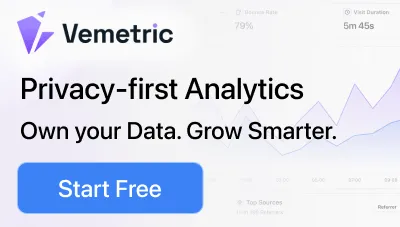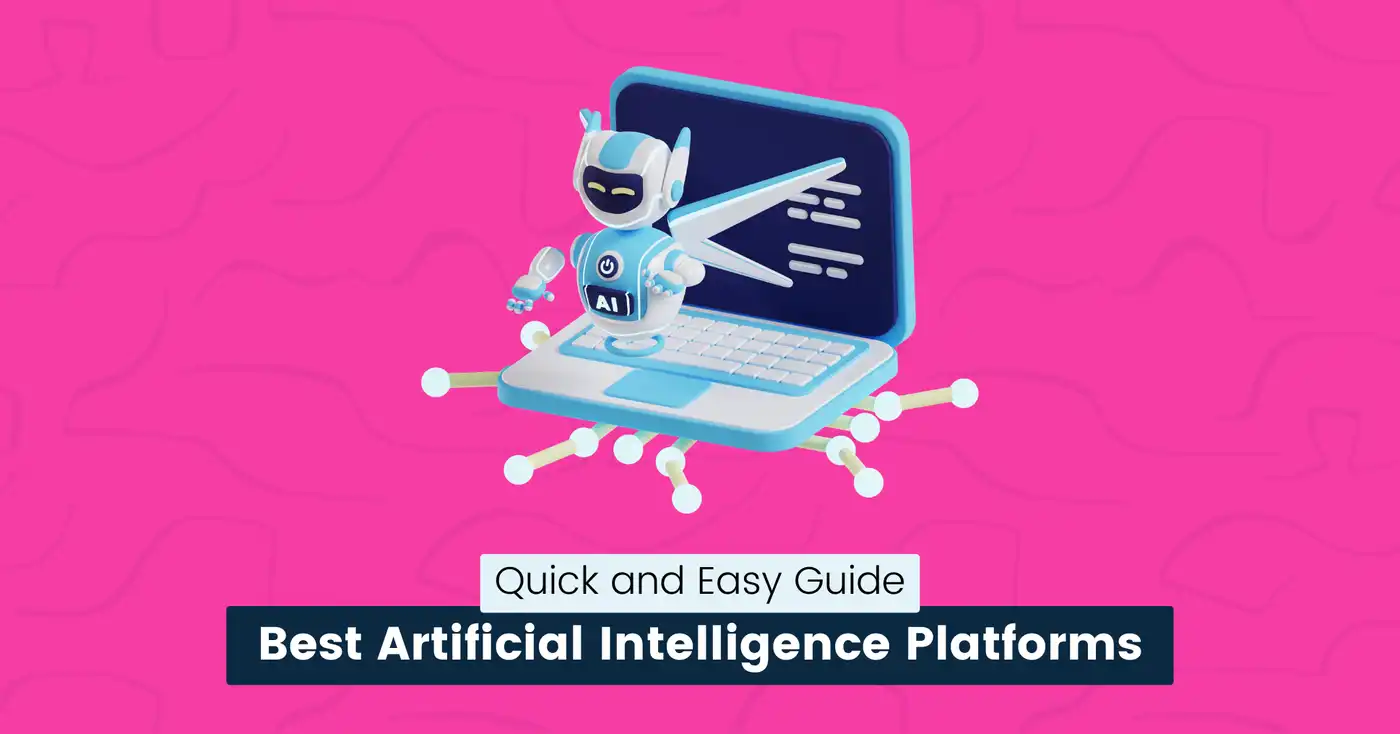
13 Best Artificial Intelligence Platforms for Development (2024)
The rapid evolution of artificial Intelligence technologies is significantly impacting our daily lives.
Developers have access to numerous AI platforms that make it easier to develop, maintain, and deploy AI solutions more efficiently and accurately.
These platforms offer a range of tools and services for businesses looking to leverage AI for competitive advantage.
Whether you are searching for an open-source platform or niche web services, this guide will help you choose the best AI platforms for your development needs.
Let’s get started.
snappify will help you to create
stunning presentations and videos.
What are AI platforms?
AI platforms are tools and technologies that allow developers to create, train, and deploy AI applications.
These platforms provide developers and data scientists with access to the infrastructure, frameworks, libraries, and pre-built models needed to create complex AI solutions.
From deep learning and natural language processing to cloud computing and providing computer vision, AI platforms replicate human intelligence to deliver innovative solutions.
Benefits of using AI platforms
An AI platform can:
- Analyze data, make predictions, and take action faster than humans.
- Accelerate the development cycle by automating repetitive tasks.
- Provide scalable resources and reduce the overall cost of AI development.
- Facilitate collaboration between team members.
- Monitor AI models for better accuracy and efficiency.
What are the Top Artificial Intelligence Platforms?
Let’s overview some of the best AI platforms for developers.
- OpenAI: Best for research-based generative AI models.
- TensorFlow: Best for deep learning models and large-scale production environments.
- Microsoft Azure AI: Best for enterprise-level AI projects.
- Vertex AI: Best for end-to-end ML workflows.
- Keras: Best for those new to deep learning.
- H2O.ai: Best for big data processing and enterprise AI solutions.
- Amazon SageMaker: Best for fully managed machine learning lifecycle.
Tip: You can also look at our guide about the best cloud service providers.
OpenAI
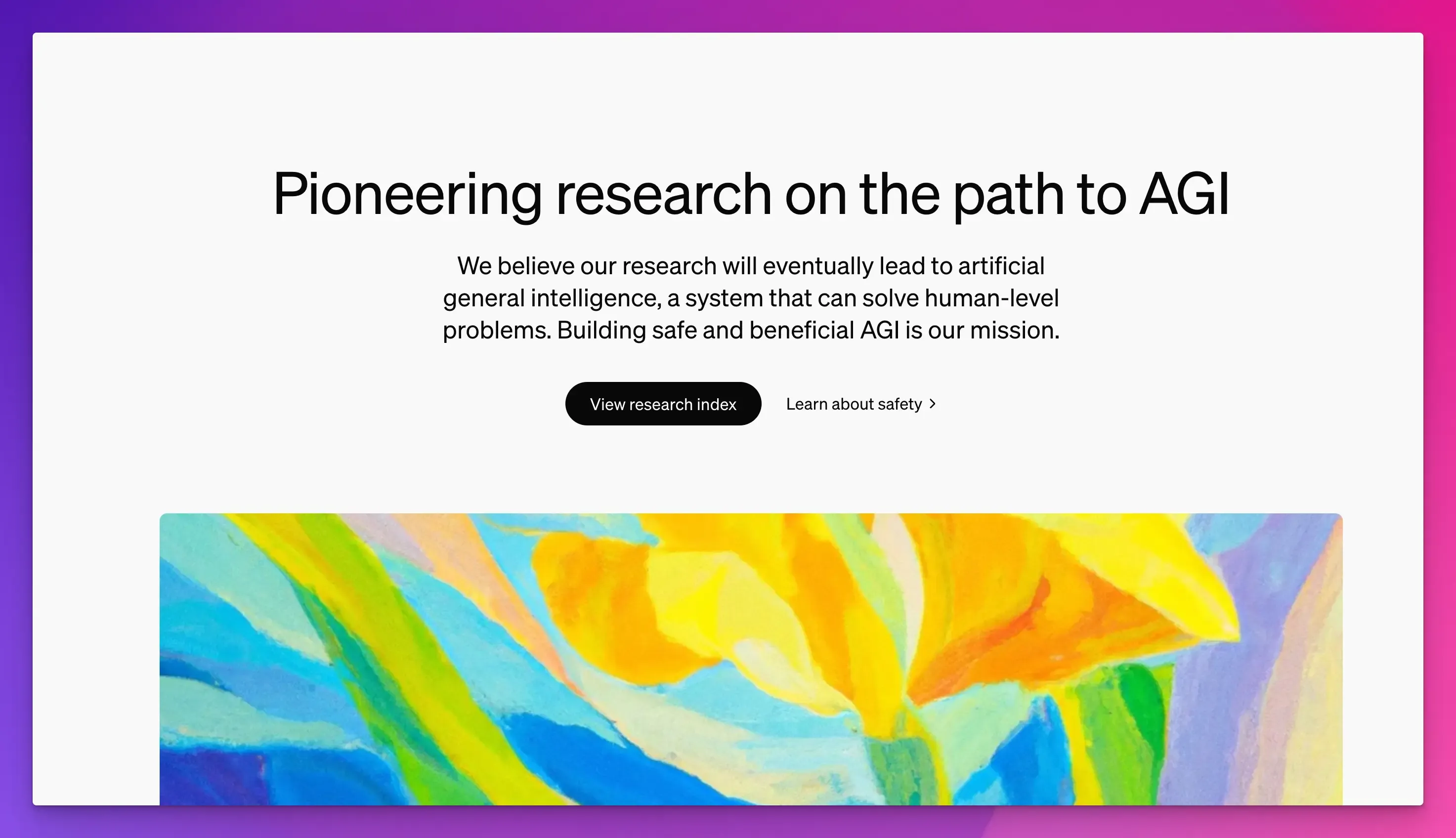
OpenAI is a research organization focused on developing and advancing artificial intelligence to solve human problems.
Its dedication to the ethical evolution of AI makes it the best choice for those seeking cutting-edge, research-driven AI solutions.
Key Features:
- Content generation. OpenAI’s powerful GPT series generates human-like text based on context and solves complex language tasks. You can also translate languages into English, transcribe speech to text, and make graphics from text descriptions.
- Code generation. OpenAI’s Codex increases developer’s efficiency with AI-assisted code suggestions and completion.
- Fine-tuning. Its versatile models can be adjusted to meet the needs of large-scale applications and specific use cases.
- Integrations. It provides simple and easy-to-use APIs for integrating its models into applications and workflows.
- Research Collaboration. It enables a collaborative community to advance AI research and development.
Pros:
- Access to state-of-the-art language models and APIs for smooth integrations.
- Continuous innovation with advancements in AI research and new feature releases.
Cons:
- Advanced models may require significant expertise to implement effectively.
- API rate can be limiting for extensive use or large-scale deployments.
Pricing:
Pay-as-you-go pricing model available upon request.
TensorFlow

TensorFlow is a Python-based open-source framework for numerical computation, machine learning, and artificial intelligence.
It provides a comprehensive ecosystem for creating machine learning models that can run in any environment and be used for various tasks such as image recognition, voice recognition, AI video analytics, and detection.
Key Features:
- Flexible architecture. It provides an intuitive and flexible way to build and deploy AI-powered applications across on-premises, web, mobile, cloud, and edge computing devices.
- Extensive ecosystem. It offers a vast library of pre-trained models, components, and tools to simplify development, visualize datasets, and debug machine learning models.
- Production-level scalability. Its ****end-to-end machine learning platform allows you to use production-level tools to automate and track model training and performance over your product’s lifecycle.
- Community support: It provides extensive documentation, tutorials, and forums.
- Integrations: Smooth integrations with other Google tools and APIs.
Pros:
- It supports various applications, including neural networks, reinforcement learning, and computer vision.
- Compatible with programming languages like Python, C++, and JavaScript.
- It can handle large-scale machine-learning models and data processing.
Cons:
- It can be complex for beginners and requires a basic understanding of machine learning principles and core concepts.
- Code can be harder to read as it primarily focuses on numerical data.
Pricing:
TensorFlow is free and open-source.
Microsoft Azure AI
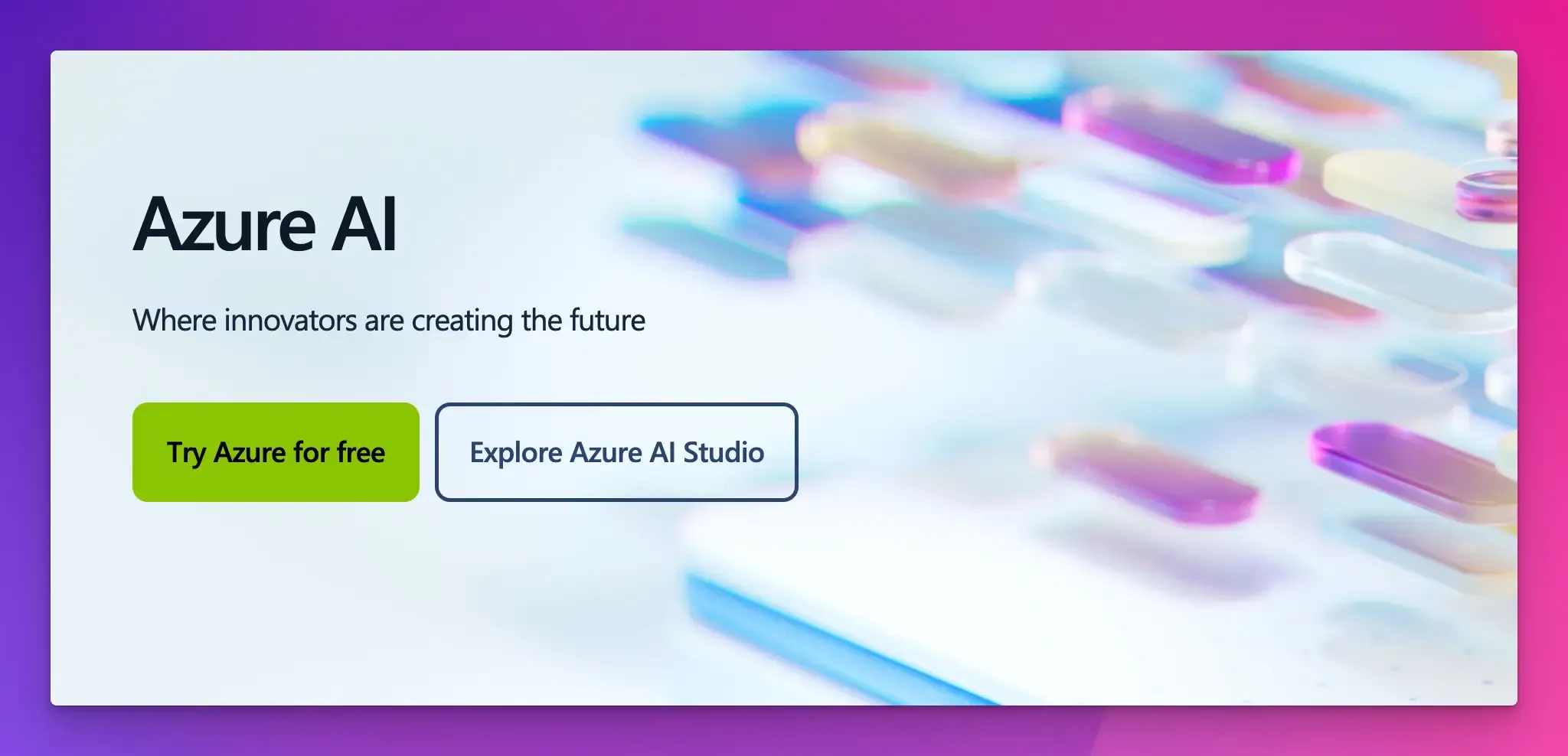
Microsoft Azure AI is a comprehensive suite of tools for building, training, and deploying AI models and applications on the Azure cloud platform.
It is built on Azure’s secure, scalable cloud infrastructure, which makes it an ideal choice for managing large-scale data processing and machine learning models.
Key Features:
- Automated machine learning. Azure Machine Learning allows users to build high-quality models and manage a complete lifecycle using AutoML and MLOps (DevOps for machine learning).
- Cognitive services. Pre-built APIs for vision, speech, language, facial recognition, speech-to-text, and sentiment analysis.
- Integration with Azure ecosystem. Seamless integration with other Azure services and third-party tools, as well as support for popular open-source frameworks like PyTorch and TensorFlow.
Pros:
- Comprehensive toolset, smooth integrations, and compatibility with popular AI frameworks.
- Enterprise-grade security for large-scale deployments across multiple cloud, on-premises, and at the edge.
Cons:
- Steep learning curve for those new to Azure platform.
- It can be expensive, especially for advanced services.
Pricing:
- Free trial for 30 days.
- Pay-as-you-go pricing model based on usage.
Vertex AI
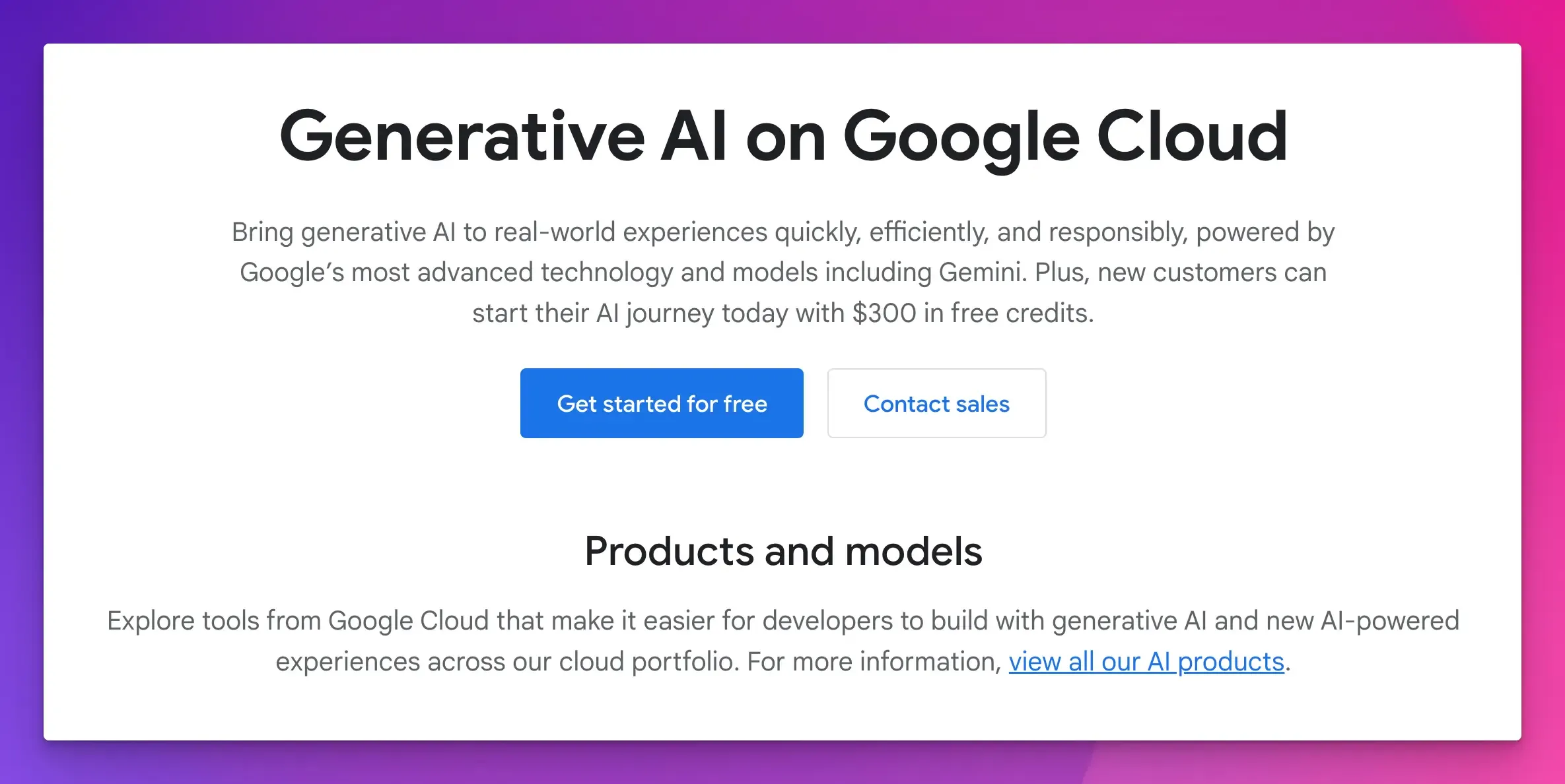
Vertex AI is a fully managed machine learning platform by Google Cloud that develops and manages AI models.
It provides a unified interface for managing machine learning models, including data preparation, model training, and deployment, more efficiently and at scale.
Key Features:
- AutoML capabilities. Users can build high-quality models with minimal coding and machine learning expertise.
- MLOps tools: It allows data scientists and ML engineers to automate and manage ML projects with CI/CD pipelines.
- Integration with Google Cloud ecosystem: Vertex AI integrates with other Google Cloud services like BigQuery, Dataflow, and Cloud Storage, enhancing its data processing and analysis capabilities.
Pros:
- It leverages Google Cloud’s robust infrastructure for scalable deployments.
- Pre-built pipelines, AutoML features, and access to advanced AI tools from Google simplify the development process.
Cons:
- Learning curve may be complex for new users.
- Limited customization and dependency on the Google Cloud ecosystem might not suit all organizations.
Pricing:
Pay-as-you-go pricing based on computing hours used.
Keras
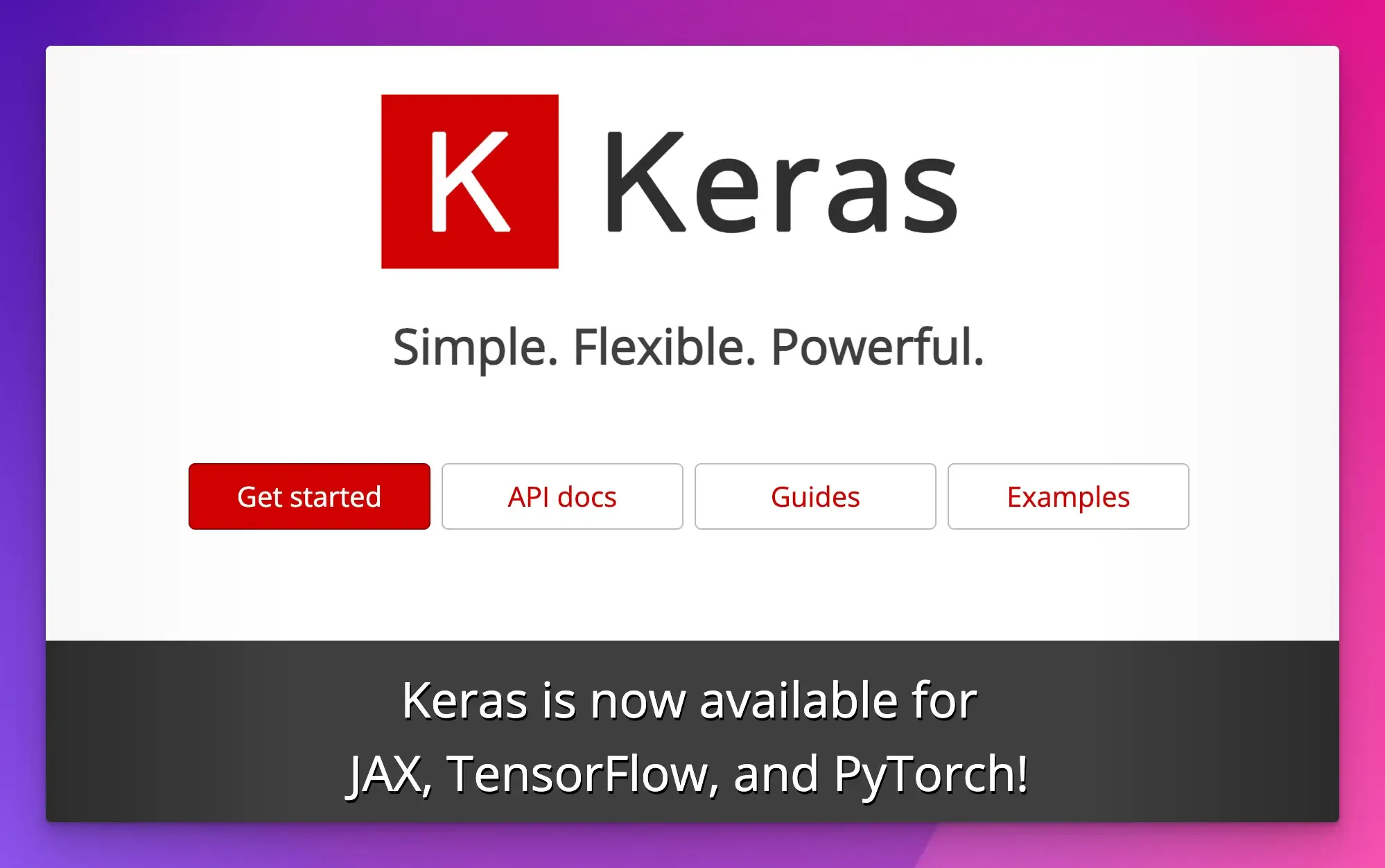
Keras is an open-source, Python-based, high-level neural networks API known for its user-friendly interface and modular design.
It is built on popular backend frameworks like TensorFlow, PyTorch, and JAX, which makes it flexible for building and training deep learning models.
Key Features:
- Modular architecture. Keras offers a modular design allowing easy configuration, visualization, and customization of neural networks.
- XLA compilation. You can optimize your models for faster training and execution across multi-GPUs or TPUs, which allows for scalable machine learning.
- Integration with TensorFlow: You can create models using TensorFlow’s vast ecosystem of tools and extensions and easily deploy them across server, mobile, browser, and embedded environments.
Pros:
- Strong community support, extensive documentation, and a rich ecosystem of extensions and tools.
- Easy to use for beginners and allows for quick prototyping and experimentation.
Cons:
- Dependency on backend libraries may limit performance and customization options.
- Handling highly complex models can be challenging.
Pricing:
Kera is free and open-source.
H2O.ai
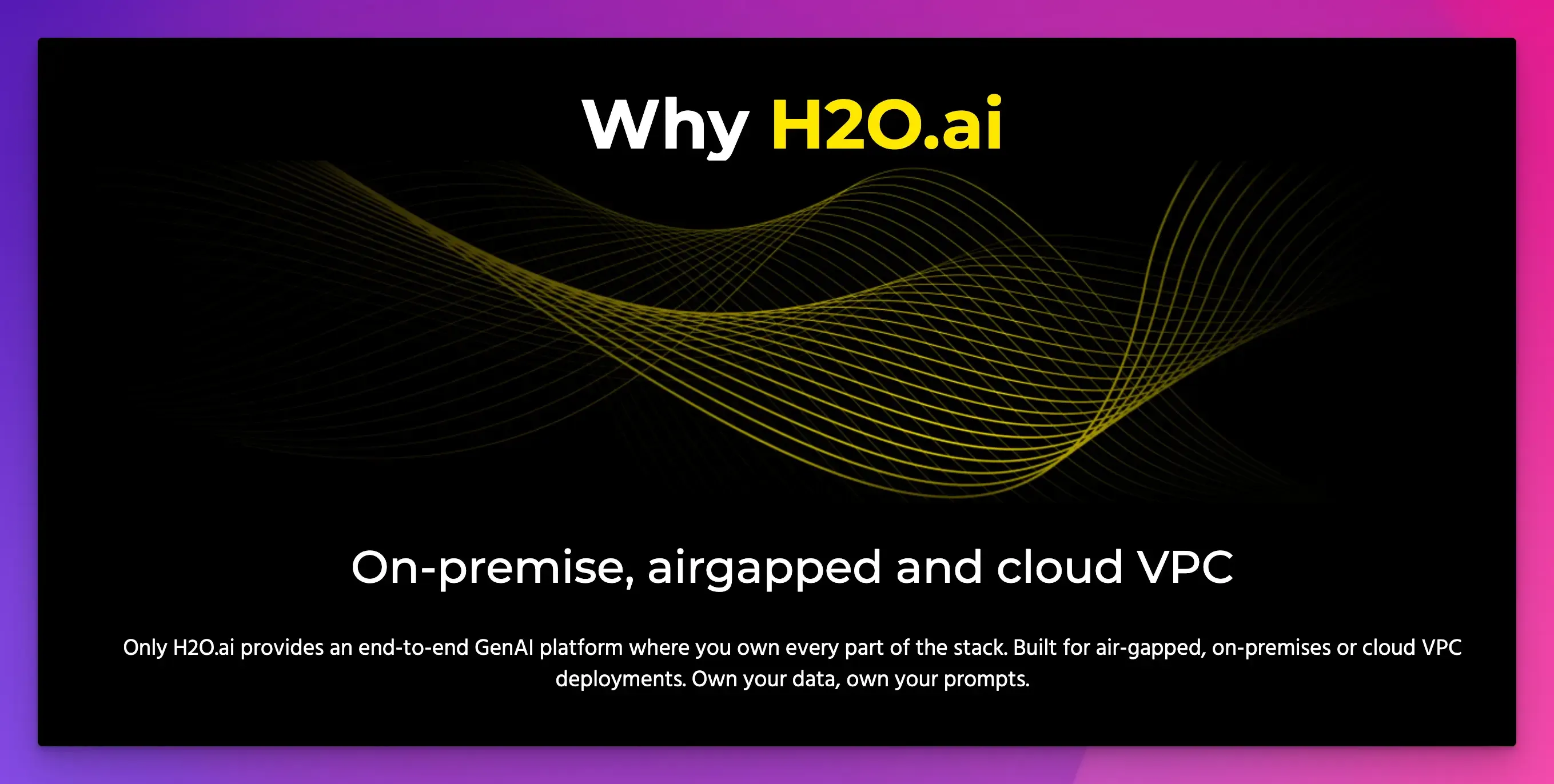
H2O.ai is an open-source AI platform that provides tools for building and deploying machine learning models.
It offers various algorithms and automated tools for feature engineering, data preprocessing, model training, and selection.
Key Features:
- AutoML. It allows you to automate the data science lifecycle, making it easier to build models with greater accuracy and without extensive expertise.
- Custom AI apps. H2O.ai allows users to create custom AI apps with auto-generated code.
- Scalable infrastructure. It is designed to build and deploy scalable ML projects with support for big data processing.
- Model interpretability toolkit. It provides tools for explaining models and AI results, which is important to establish trust and transparency.
Pros:
- User-friendly interface, visual workflows, and automation tools to speed up the development process.
- Integrations with big data ecosystems and various deployment options.
Cons:
- Learning curve may be complex for beginners.
- Advanced features like H2O Driverless AI can be expensive.
Pricing:
Free for open-source projects with limited features.
Amazon SageMaker
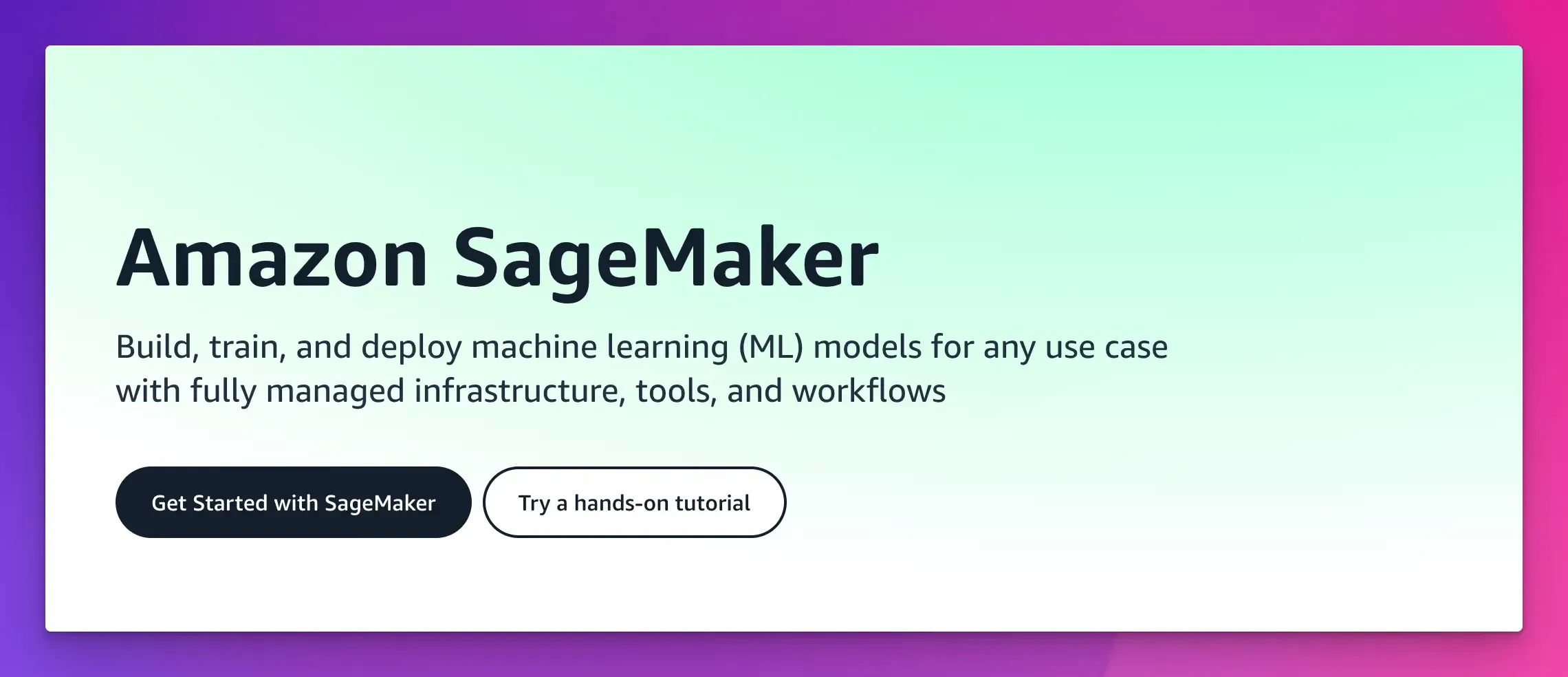
Amazon SageMaker is a fully managed service from Amazon Web Services (AWS) that allows developers and data scientists to build, train, and deploy machine learning models at scale.
It is a cloud-based solution that offers tools to streamline the entire machine-learning workflow, from data preparation and labeling to model retraining and monitoring.
Key Features:
- Pre-built tools and algorithms. It has many tools, such as notebooks, profilers, debuggers, pipelines, and MLOps, to automate the ML process at scale and optimize model performance. You can also experiment and explain your models and get inference recommendations.
- Integration with AWS Services. It integrates with other tools and services in the AWS ecosystem for comprehensive data and analytics solutions.
- Support for popular frameworks. SageMaker supports all popular ML frameworks, algorithms, and programming languages.
Pros:
- Support for large-scale AI and machine learning tasks with AWS’s powerful cloud infrastructure.
- End-to-end automation platform for full-cycle ML workflows.
Cons:
- Pricing can be complex and requires careful resource management for large-scale projects.
- May cause vendor lock-in to AWS services.
Pricing:
- Free tier available for new users.
- Pay-as-you go pricing model based on product and usage.
Other Artificial Intelligence Platforms You Can Explore
Here are some more AI platforms that are worth checking:
- IBM Watson: For large-scale enterprise solutions, data visualization, analytics, and advanced natural language processing, such as conversational AI for building chatbots and virtual assistants.
- DataRobot: For automated ML and building precise predictive models.
- OpenCV: Open-source AI platform for developing computer vision applications and tasks such as object detection image and video processing.
- Alteryx: A self-service analytics platform to simplify data preparation, blending, and analysis.
- Databricks: A unified analytics platform that provides a collaborative workspace for big data processing, data science, analytics, and machine learning at scale.
- Salesforce Einstein: AI platform for CRM solutions and predictive insights into customer behavior, sales, and marketing.
snappify will help you to create
stunning presentations and videos.
Final Words
We’ve compiled a list of the best AI platforms based on their diverse features and strengths.
Choosing the right platform can accelerate your AI projects and deliver efficient and innovative solutions.
If you like this article, check out AI tools for developers.
FAQs:
Is there a free platform for artificial intelligence?
Yes, open-source AI platforms such as PyTorch and TensorFlow are free to use.
What are some popular AI tools for machine learning and development?
Some popular AI tools for machine learning and development include Google Cloud Platform and open-source platforms that use powerful AI algorithms.
